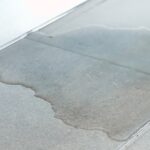Thinking about adding a small pool to your yard? A plunge pool might be just what you’re looking for!
These compact pools are perfect for cooling off, relaxing, and even getting some exercise.
But before you dive in, you’ll want to know how much a plunge pool costs.
Let’s start with the basics. Plunge pools are smaller than regular pools. They’re usually about 5 to 7 feet deep and can be round or rectangular.
Some people call them cocktail pools or dipping pools. They’re great for small yards or if you don’t want to spend as much as you would on a big pool.
How Much Does a Plunge Pool Cost?

So, how much does a plunge pool cost? Well, it depends on a few things. But here’s a quick look at the numbers:
- Typical price range: $10,000 to $50,000
- Average cost: $20,000
Remember, these are just rough numbers. Your actual cost might be different.
It depends on things like how big you want your pool, what it’s made of, and where you live.
Now, let’s dive deeper into plunge pool costs. We’ll look at what affects the price, different types of plunge pools, and ways to save money.
By the end, you’ll have a good idea of what to expect when planning your plunge pool project.
How Much Does a Plunge Pool Cost?
Let’s break down the costs a bit more. The price of a plunge pool can change based on its size:
- Small plunge pool (about 6 feet across): $10,000 to $15,000
- Larger plunge pool (10 to 12 feet across): $20,000 to $30,000
But size isn’t the only thing that affects price. The type of pool matters too:
- Above-ground plunge pools: Can start as low as $3,000, but can go up to $30,000
- In-ground plunge pools: Usually $10,000 to $35,000
Remember, these are just starting points. The final cost depends on many things. Let’s look at those factors next.
Factors in Calculating Plunge Pool Cost
When you’re figuring out how much your plunge pool will cost, there are several things to think about. Let’s go through each one:
-
Pool Size and Shape
The bigger the pool, the more it usually costs. Here’s a quick breakdown:
- Small pool (6 feet across): $10,000 to $15,000
- Large pool (10-12 feet across): $20,000 to $30,000
Shape matters too. Simple shapes like squares or rectangles are usually cheaper. Curved or custom shapes cost more.
-
Pool Type
You can choose between above-ground and in-ground plunge pools:
- Above-ground: $3,000 to $30,000
- In-ground: $10,000 to $35,000
Above-ground pools are often cheaper because they don’t need as much digging.
-
Pool Material
The material your pool is made of affects the price a lot:
- Vinyl: $10,000 to $18,000
- Fiberglass: $10,000 to $22,000
- Concrete: $20,000 to $35,000 or more
Vinyl is usually the cheapest, but it might not last as long. Concrete is the most expensive, but it’s very strong and can be any shape you want.
-
Pool Location
Where you put your pool matters. If it’s hard for machines to get to your yard, it might cost more to install the pool.
-
Labor
The people who build your pool need to be paid. Labor costs are usually $1,000 to $6,000. This depends on the pool material and how long it takes to install.
-
Permits
You might need a permit to build a pool. This can cost $400 to $1,800, depending on where you live. Above-ground pools often don’t need permits, but it’s good to check.
-
Site Preparation and Excavation
Before building the pool, workers need to get your yard ready. This means making the ground level and removing things like rocks or tree stumps. It usually costs $1,500 to $5,000.
-
Geographic Location
Where you live affects the price too. Things often cost more in big cities than in small towns.
Additional Costs and Considerations
When you’re planning your plunge pool budget, there are some extra things to think about:
Temperature Control
If you want to use your pool when it’s cooler outside, you might want a heater. This can cost $1,600 to $3,600.
Customizations
You can add lots of cool things to your plunge pool. Here are some popular add-ons and their costs:
- Tile: $4 to $32 per square foot (fancy tiles can be up to $100 per square foot)
- Spa system: $3,500 to $15,000
- Water features (like fountains): $800 to $1,200
- Pool cover: $100 to $2,400
- Lighting: $800 to $1,200 per light
- Ladder: $65 to $400
- Steps: $90 to $700
- Underwater bicycle: Starts at $275
- Underwater treadmill: Starts at $1,300
- Swim jets (for swimming in place): Start at $2,000
- Automated control system (to control pool features with your phone): $1,500 to $2,600
- Saltwater conversion: $500 to $2,500
- Variable speed pump (saves energy): $270 to $1,200
- Infinity edge: $25,000 to $50,000
Property Taxes
Adding a pool might make your property taxes go up. How much depends on where you live.
Maintenance
You’ll need to take care of your pool. This can cost $110 to $349 per month if you hire someone. Many people spend about $229 a month on pool cleaning.
Types of Plunge Pools
Now let’s look at the different types of plunge pools you can choose from:
Concrete
- Cost: $20,000 to $35,000 or more
- Pros:
- Can be any shape you want
- Very strong and lasts a long time
- Cons:
- Most expensive option
- Takes the longest to install
Vinyl
- Cost: $10,000 to $18,000
- Pros:
- Cheapest option
- Quick to install
- Cons:
- Liner needs to be replaced every 5-9 years
- Can tear or get damaged
Fiberglass
- Cost: $10,000 to $22,000
- Pros:
- Quick to install
- Easy to maintain
- Cons:
- Limited shapes and sizes
- Can be slippery
Above-Ground
- Cost: $3,000 to $30,000
- Pros:
- Often cheaper
- Usually don’t need a permit
- Cons:
- Might not look as nice as in-ground pools
- Can be harder to get in and out of
In-ground
- Cost: $10,000 to $35,000
- Pros:
- Looks nicer
- Can add value to your home
- Cons:
- More expensive
- Takes longer to install
Benefits of Installing a Plunge Pool
Plunge pools have lots of good points:
Recreation, Relaxation, and Exercise
- Great for cooling off on hot days
- Perfect for low-impact exercise
- Good for people with joint problems
- Can add underwater exercise equipment
Increased Home Value
- Can make your home worth more
- Attractive to home buyers
- Easier to maintain than big pools
Plunge Pool Installation: DIY vs. Hiring a Professional
You might be thinking about installing a plunge pool yourself to save money. Here’s what you need to know:
DIY Installation:
- Best for above-ground pools
- Can save money on labor costs
- Needs some DIY skills
- Might take longer to complete
- Could make mistakes that cost more to fix
Professional Installation:
- Recommended for in-ground pools
- Faster installation
- Comes with warranties
- Ensures everything is done correctly
- Might cost more upfront, but can save money in the long run
How to Save Money on Plunge Pool Cost?
Want a plunge pool but worried about the cost? Here are some ways to save money:
- Get multiple quotes: Ask at least three pool companies for prices.
- Plan ahead: Book your installation for the off-season (usually fall or winter).
- Skip extra features: Stick to the basics at first. You can add fancy things later.
- Consider vinyl: It’s cheaper upfront, even if you need to replace the liner later.
- Wait on landscaping: See how you use the pool before adding expensive landscaping.
- Do your own maintenance: Learn to take care of the pool yourself instead of hiring someone.
Questions to Ask About Plunge Pool Installation
When you’re talking to pool companies, ask these questions:
- How long have you been in business?
- Can I see some references?
- Are you a member of any professional pool associations?
- Do you have insurance?
- What’s included in the price?
- Do you do all the work or use subcontractors?
- How long will the installation take?
- What kind of warranty do you offer?
- Will you teach me how to take care of the pool?
FAQs:
Here are some common questions about plunge pools:
- Q: What is a plunge pool?
A: It’s a small pool, usually 6 to 12 feet across and 5 to 7 feet deep. It’s great for cooling off or light exercise.
- Q: How much space do I need for a plunge pool?
A: Just enough for the pool size you choose, plus some space around it. They’re great for small yards.
- Q: How do I take care of a plunge pool?
A: You’ll need to keep the water clean with chemicals, use a filter and pump, and clean it regularly. It’s like a regular pool, just smaller.
- Q: Can I put a plunge pool inside my house?
A: Yes! Indoor plunge pools cost about $125 to $200 per square foot. You’ll need to think about ventilation and waterproofing too.
Conclusion:
A plunge pool can be a great addition to your home. It’s perfect if you want a pool but don’t have space or a budget for a big one. Prices can range from $10,000 to $50,000, with most people spending around $20,000.
Remember, the final cost depends on many things. The size, material, and type of pool all affect the price. So do things like where you live and what extra features you want.
Before you decide, think about what you want to use the pool for. Do you just want to cool off? Or do you want to exercise too? This can help you choose the right size and features.
Don’t forget to get quotes from several pool companies. Ask lots of questions and make sure you understand what’s included in the price.
A plunge pool can be a fun and relaxing addition to your home. With careful planning, you can find an option that fits your budget and your backyard. Happy swimming










